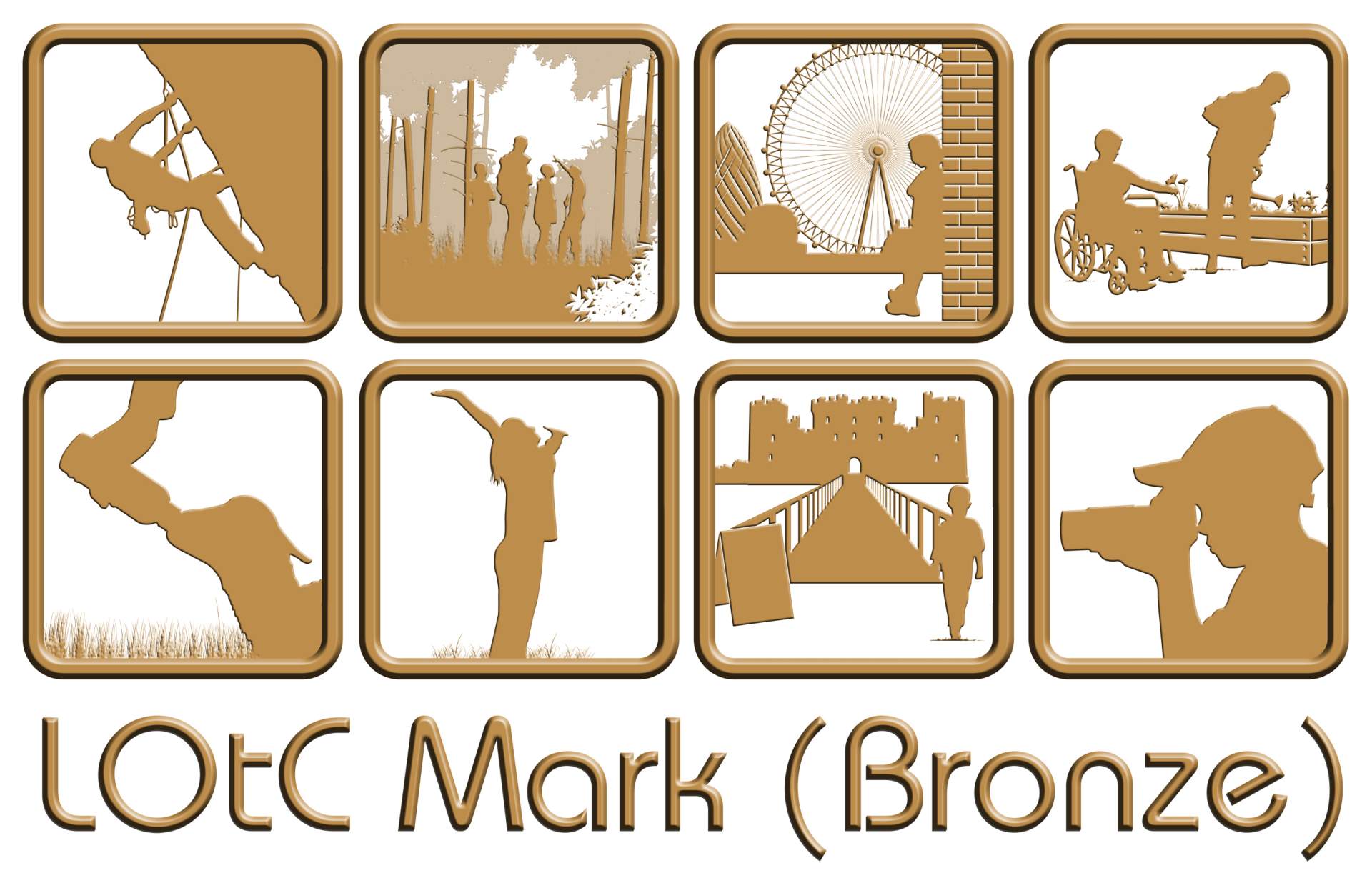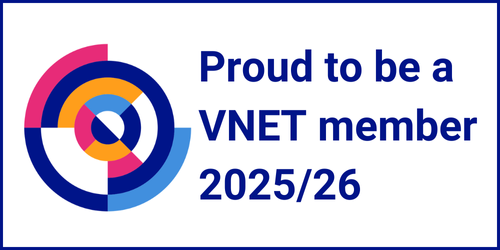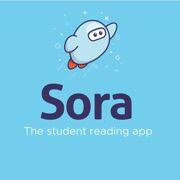Mathematics Year 1
Maths is based around real learning, the use of the classroom environment and direct teaching of skills linked to the medium term plan.
medium term plan year 1 docx 1 .pdf
Spring Term
During our Spring Lockdown we explored maths at home and how we use number, counting, measuring and problem solving in everyday life.
Mrs Hawthorne set the children challenges to measure different liquids to create magic potions. The children developed their understanding through using the key vocabulary they already knew such as full, half full and empty and building on this by finding out the actual measurements of a container if it is full or half full.
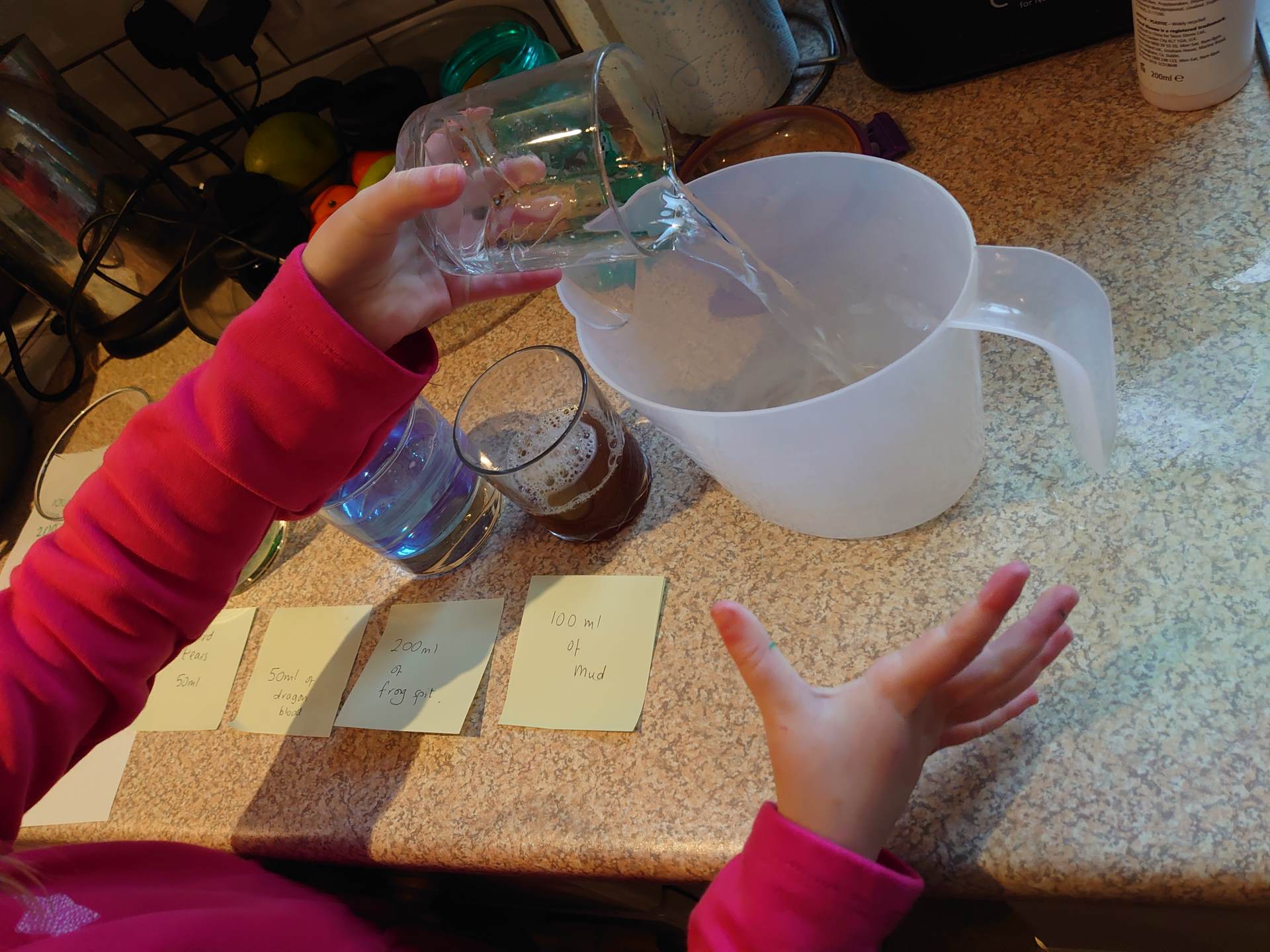
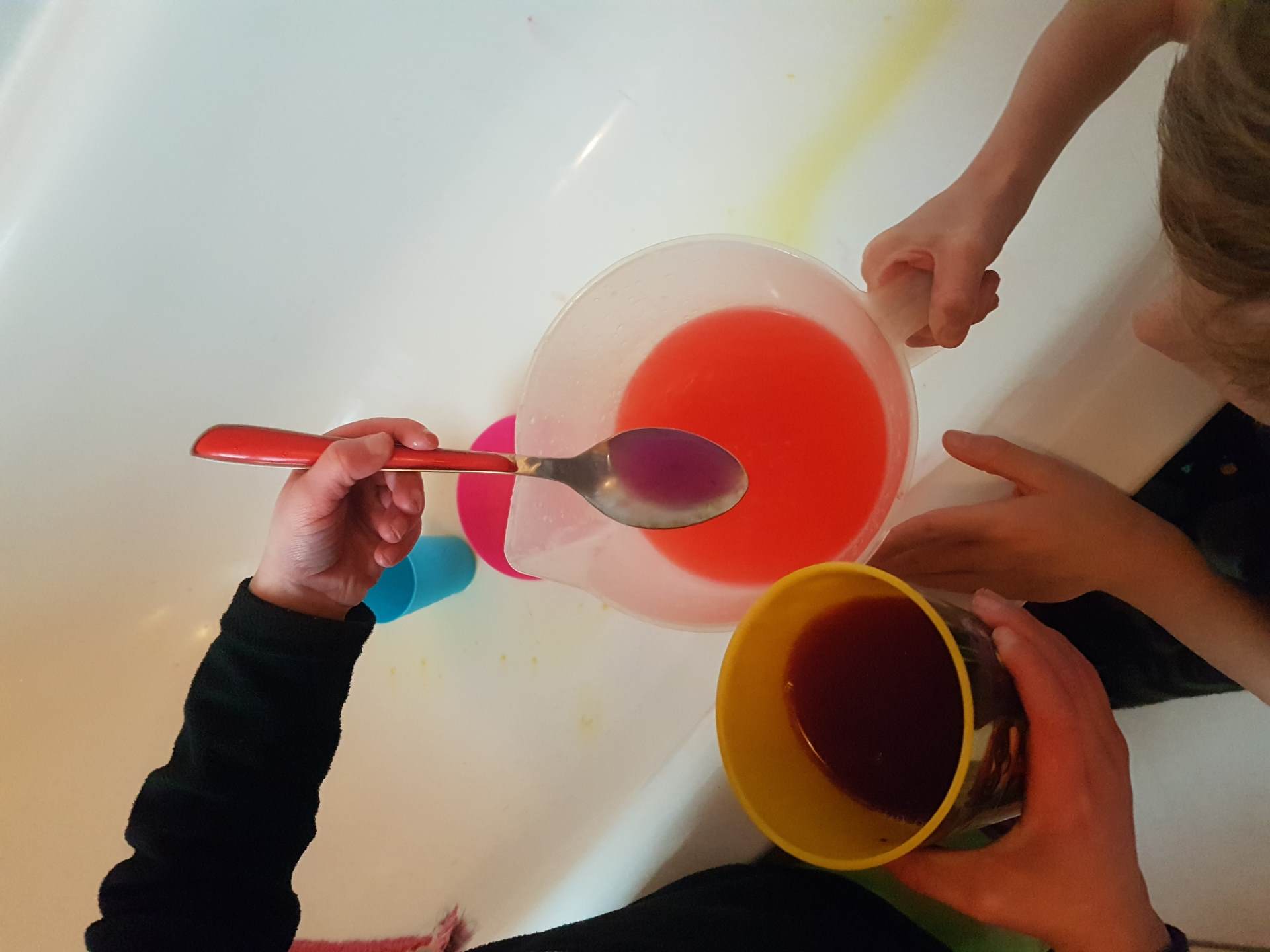
As part of our New Beginnings project, the children worked with their families to create spring time treats and support their adults by weighing and measuring the correct ingredients. Some of the Year 1 children took an interest in helping their families plant new flowers in their gardens and created their own system for measuring how tall the plants were growing.
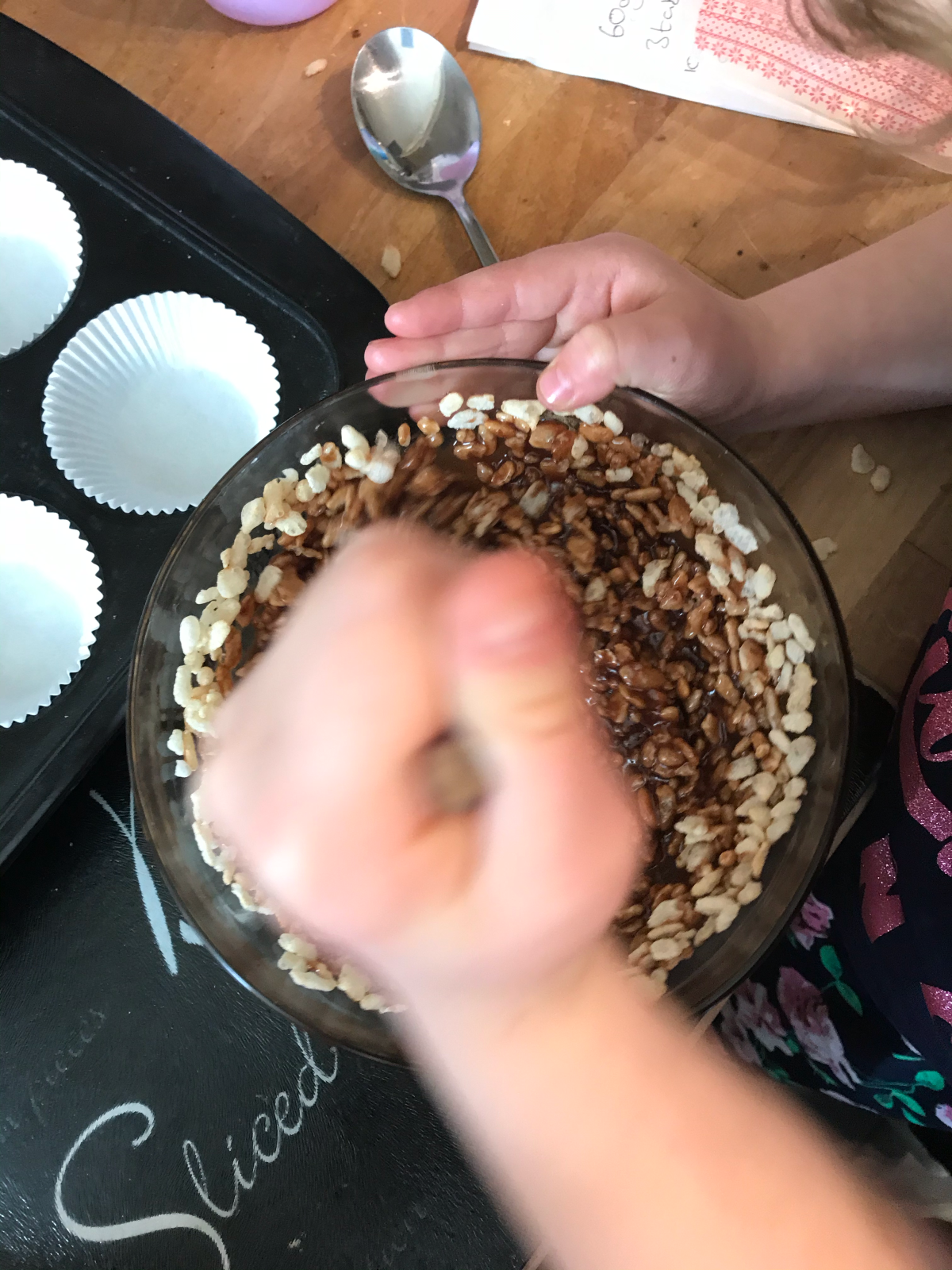
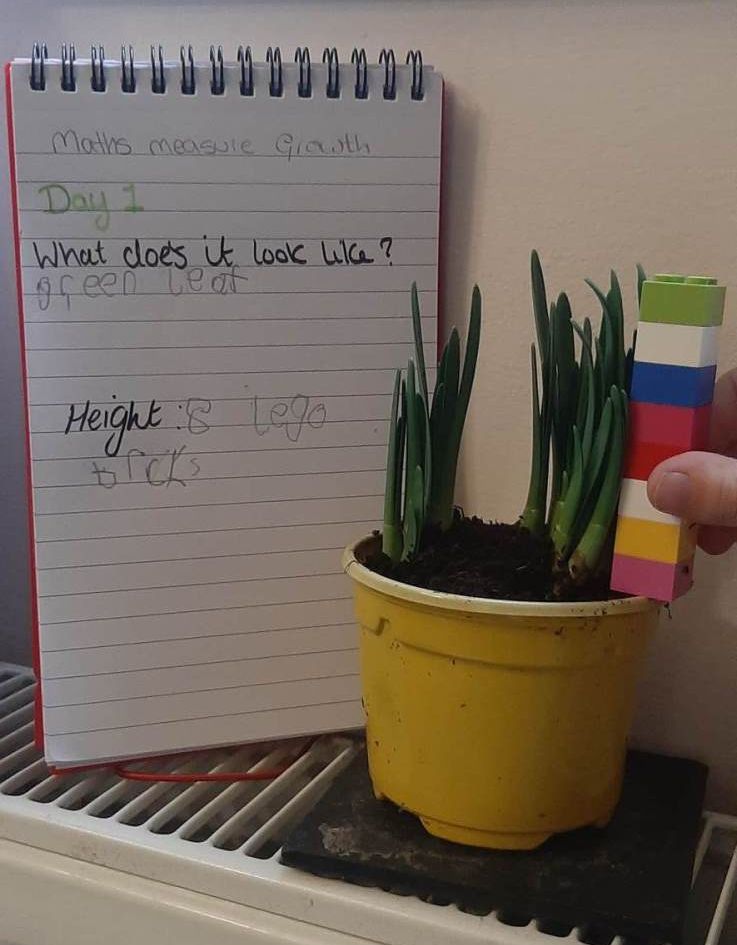
When the children arrived back at school, we continued our learning of measuring by describing, measuring and comparing the lengths of different objects, including ourselves! We used standard and non-standard units of measure and began to record our findings using the correct terms (cm = centimetres).
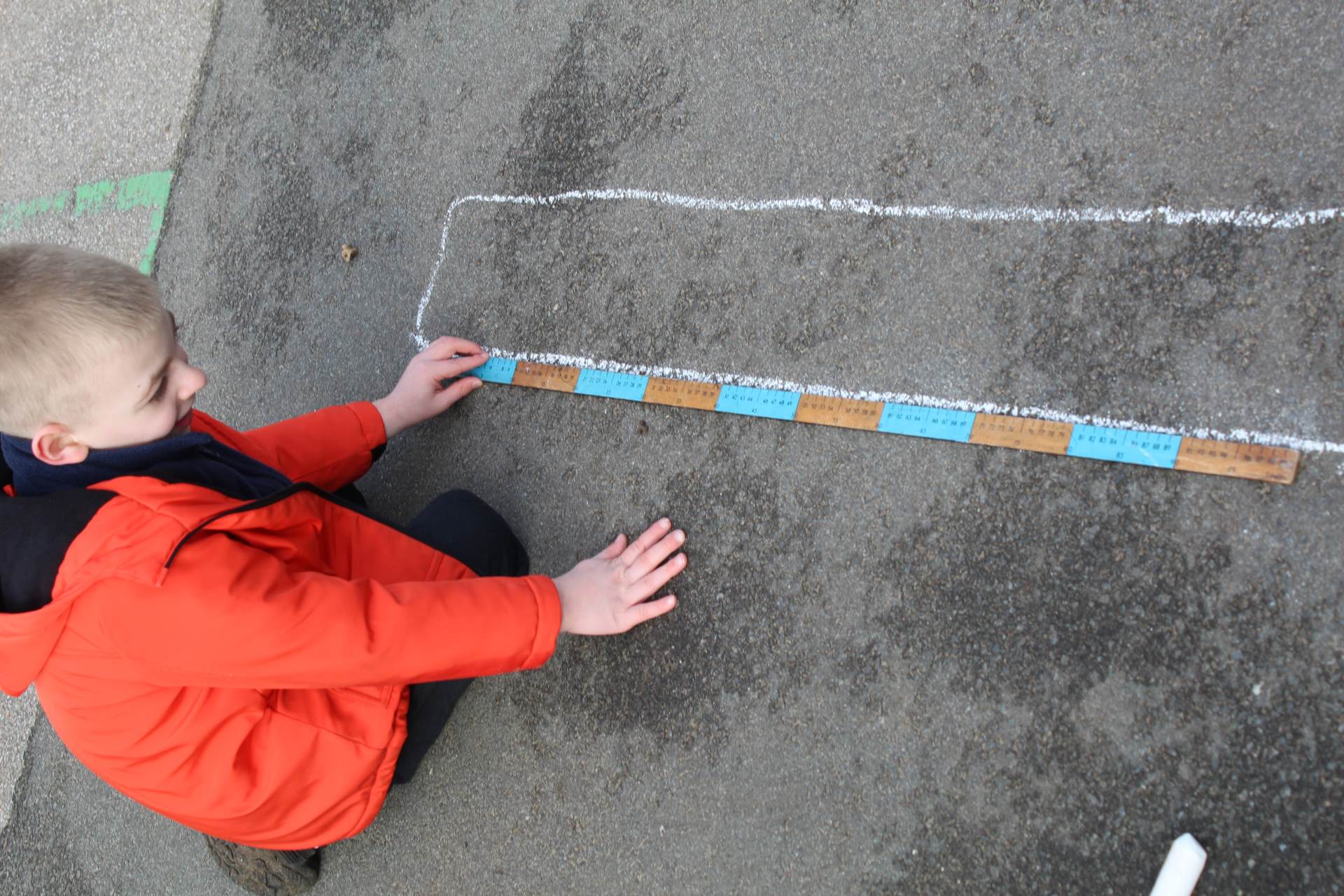
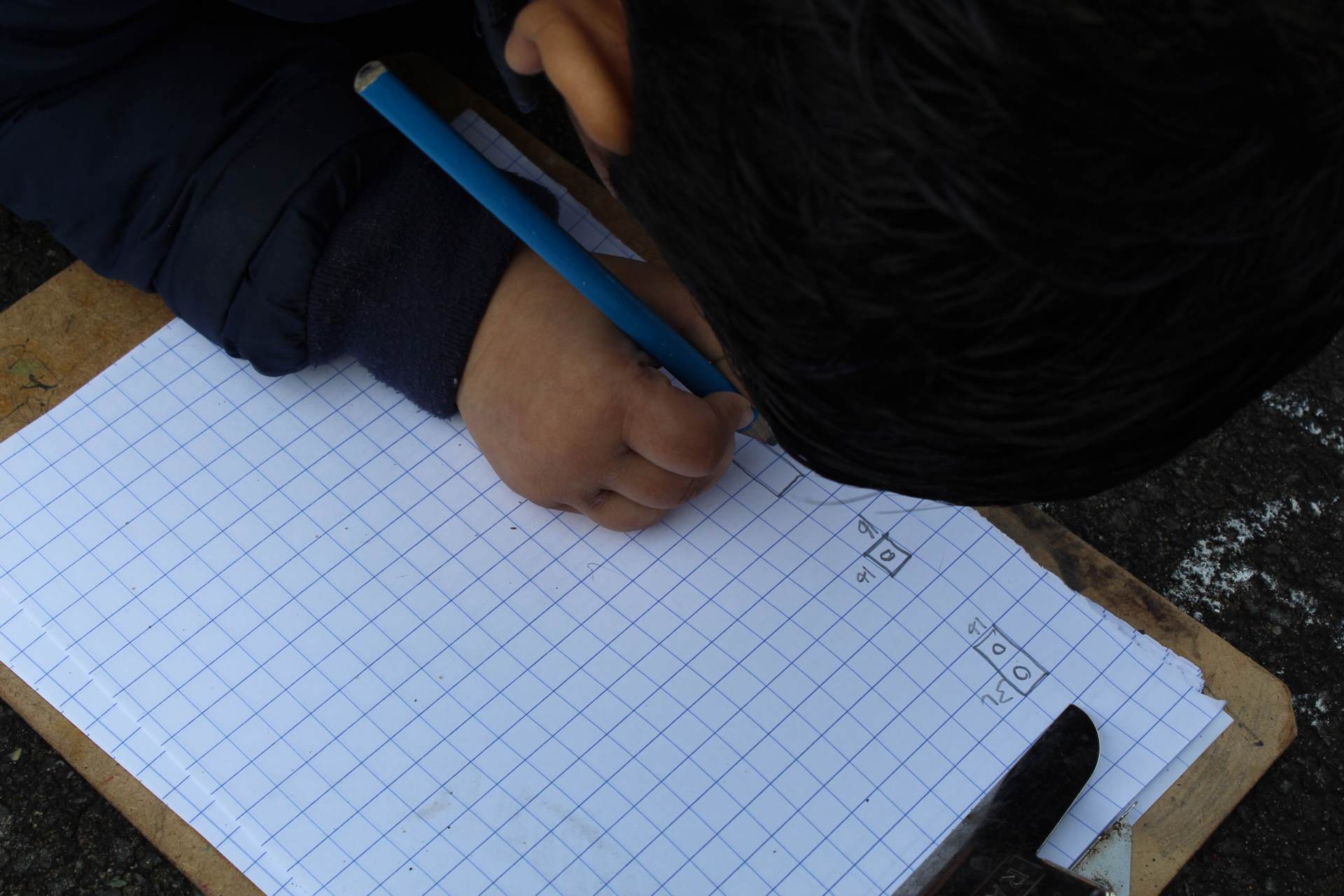
To extend this further, the children began to weigh their cereal and fruit for snack cafe. For every 30 grams of fruit or cereal, the children had to pay 15 ones using dienes/base 10. Some of the children used the unit cubes and some children began to look at place value and exchanging their ones for tens. For an additional challenge, some of the children were only given tens to pay with and had to work out their change.
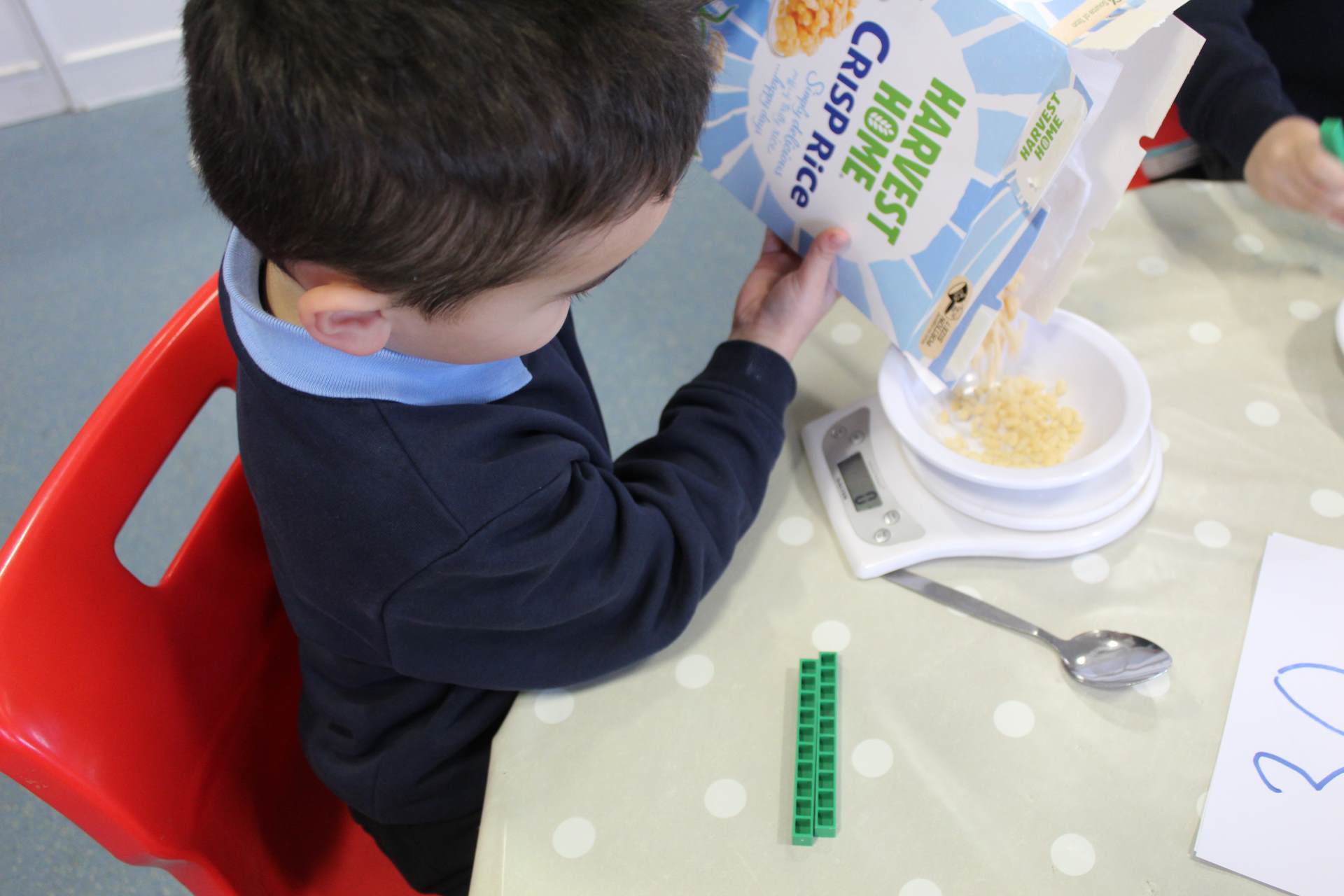

Maths - Shape, Space & Measure (ii) (43-67+ months)
Ma1/3.1 Measurement
Autumn Term
In the Year 1 classrooms we have designated maths areas where the children are able to choose and use a variety of concrete, pictorial and abstract resources to support their learning.
In other areas of provision such as construction and block play, maths equipment such as tape measures, rules, stopwatches and calculators are also available for the children to use to build their knowledge and confidence of mathematical concepts and skills.
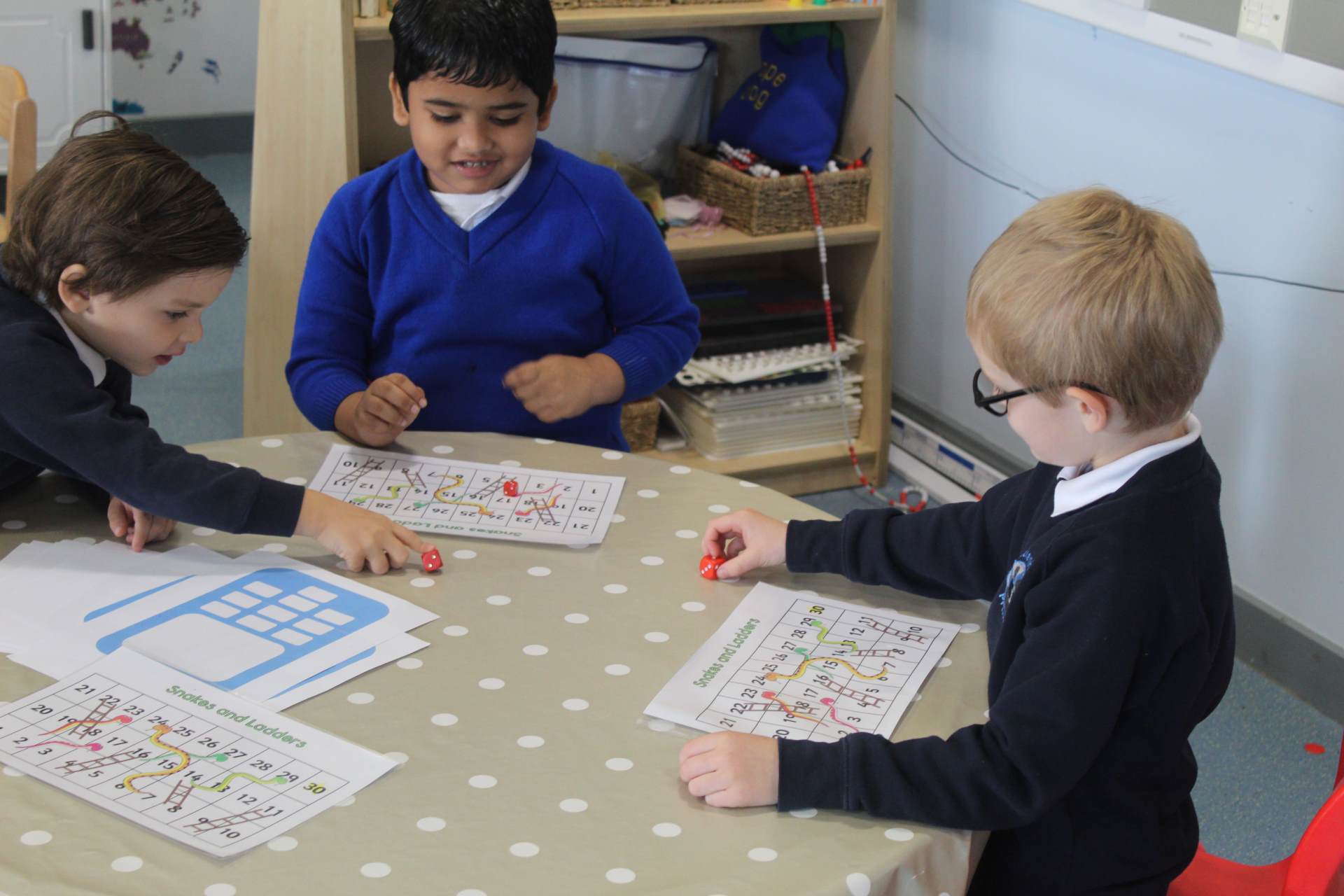
The children used a game of snakes and ladders with numbers 1-30 to count forwards and backwards from any given number.
Ma1/2.1a count to and across 100, forwards and backwards, beginning with 0 or 1, or from any given number.

Each morning when the children arrive, they add their lunch orders to a bar chart using named Lego bricks. The class data team are then responsible for collecting and recording this information as well as using a part whole model to find how many children are present and absent.
Ma1/2.1d identify and represent numbers using objects and pictorial representations including the number line, and use the language of: equal to, more than, less than (fewer), most, least.

The children used were curious to find out which one of our small world creatures was the largest. They worked together to line up the animals but found it difficult to place the hippo. "The hippo isn't big tall but it is big sideways".
Ma1/3.1a compare, describe and solve practical problems for:
- lengths and heights [for example, long/short, longer/shorter, tall/short, double/half].

As part of our adult directed maths learning, the children were challenged to use their estimation and subitising skills to guess how many cubes were in the pot. They were not allowed to count the objects but use their place value knowledge to accurately say how many were in the pot.
Ma1/2.1d identify and represent numbers using objects and pictorial representations including the number line, and use the language of: equal to, more than, less than (fewer), most, least.

In our Atrium learning space, the children have continuous access to a water tray and equipment. The children have been getting familiar with a range of measuring equipment such as beakers, jugs and tubes.
- lengths and heights
- mass/weight
- capacity and volume
- time (hours, minutes, seconds)

3D shapes were used to create "houses". "The block is the bottom and it has a point on top". The teacher then worked with this child to introduce the shape names.
- 2-D shapes
- 3-D shapes

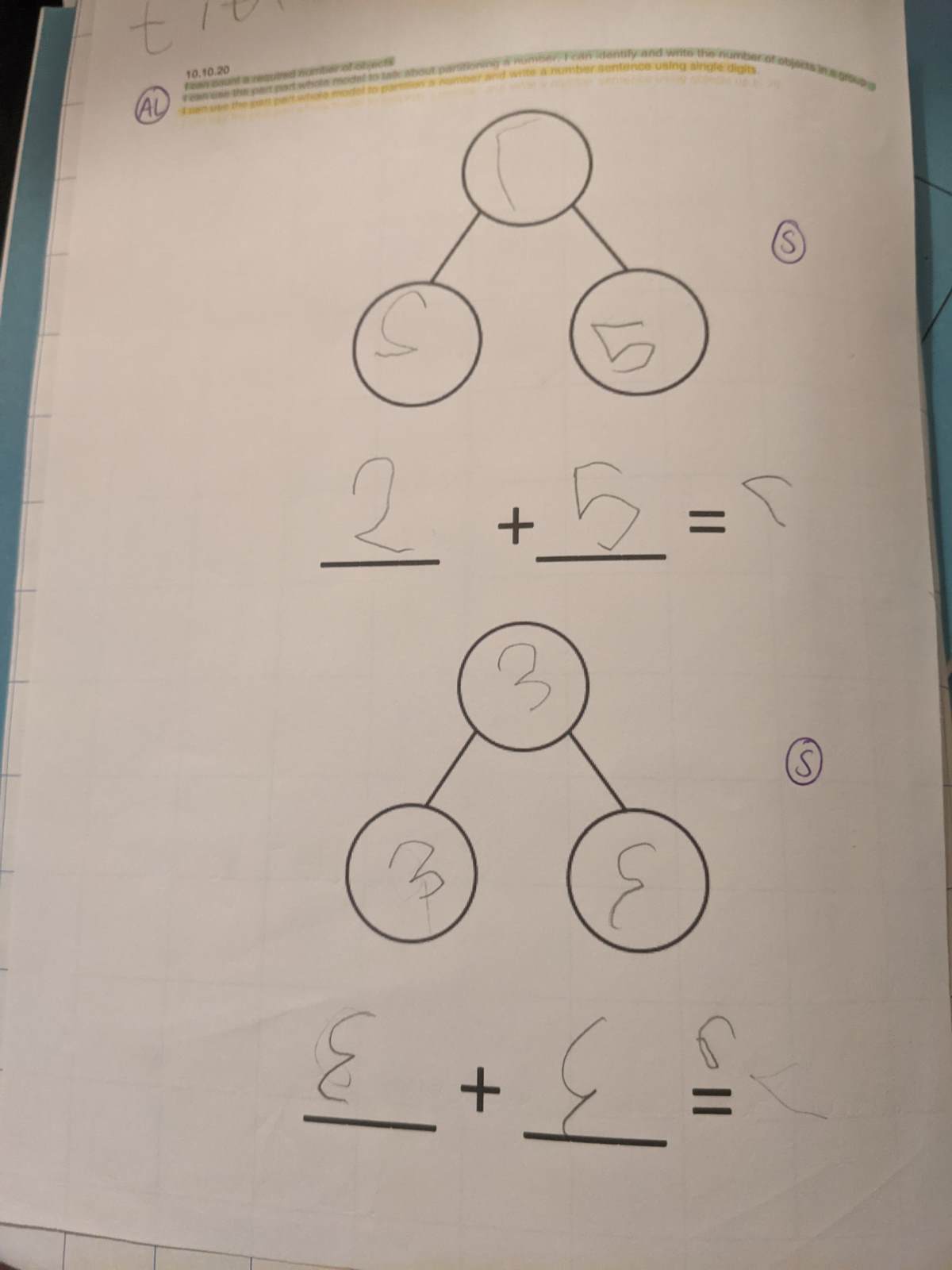
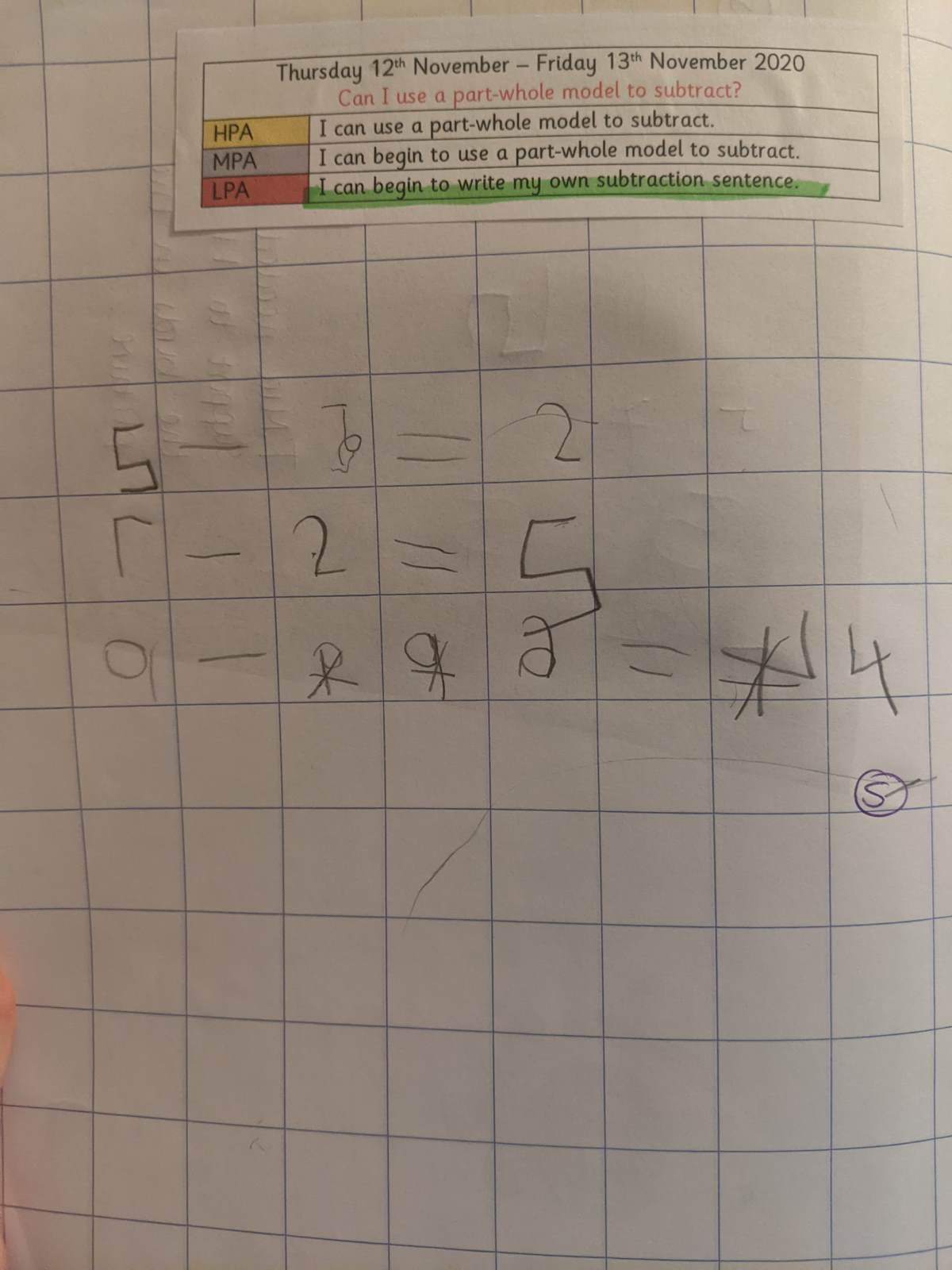
Children are encouraged to use concrete, pictorial and abstract methods to solve problems, record their working out and use to prove their knowledge.
Ma1/2.2a read, write and interpret mathematical statements involving addition (+), subtraction (-) and equals (=) signs.
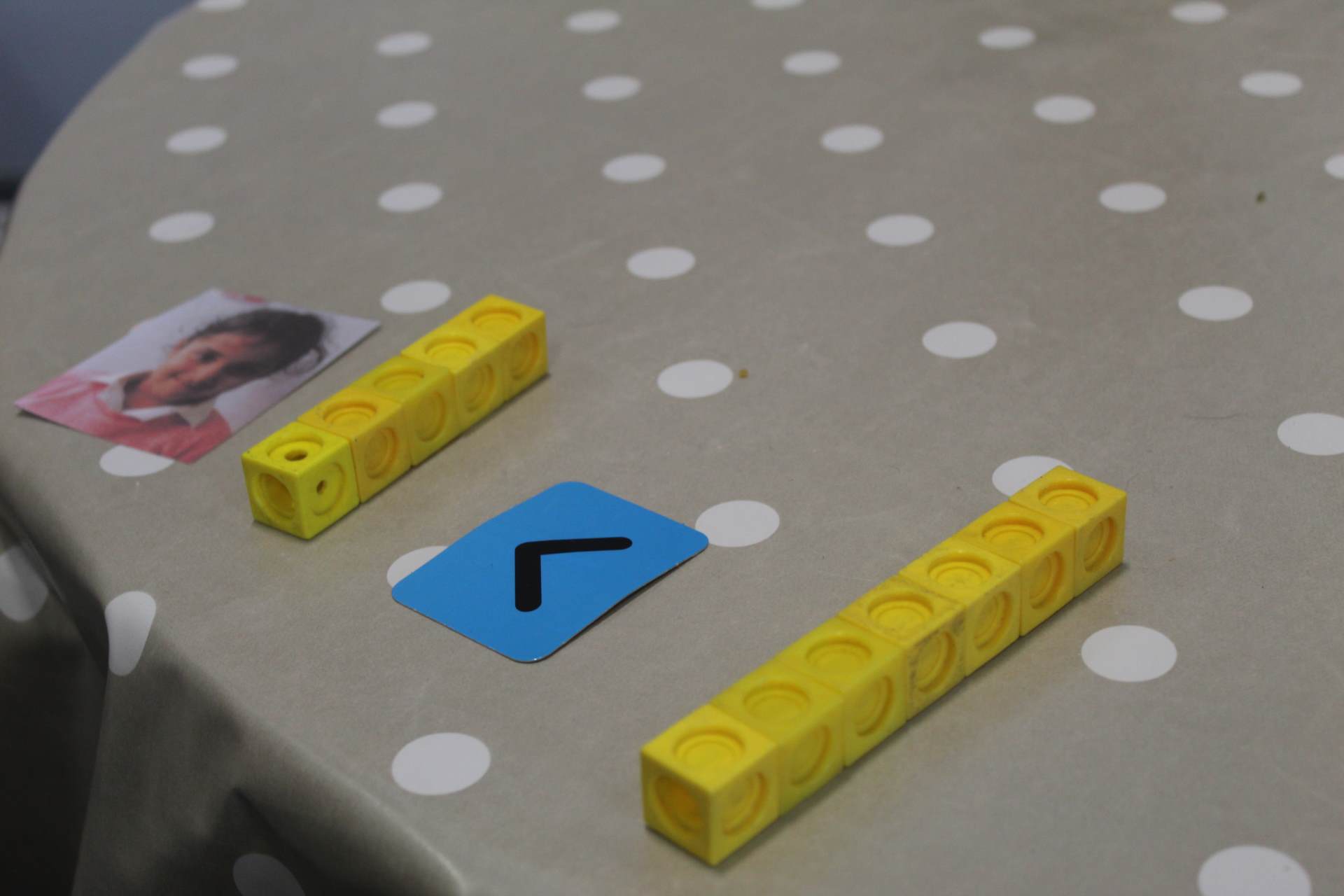
To continue our work on number bonds to 10 and 20, the children were introduced to greater than, less than and equals to. They used the symbols to compare the products of two values and took their own photographs to record this.
Ma1/2.1d identify and represent numbers using objects and pictorial representations including the number line, and use the language of: equal to, more than, less than (fewer), most, least

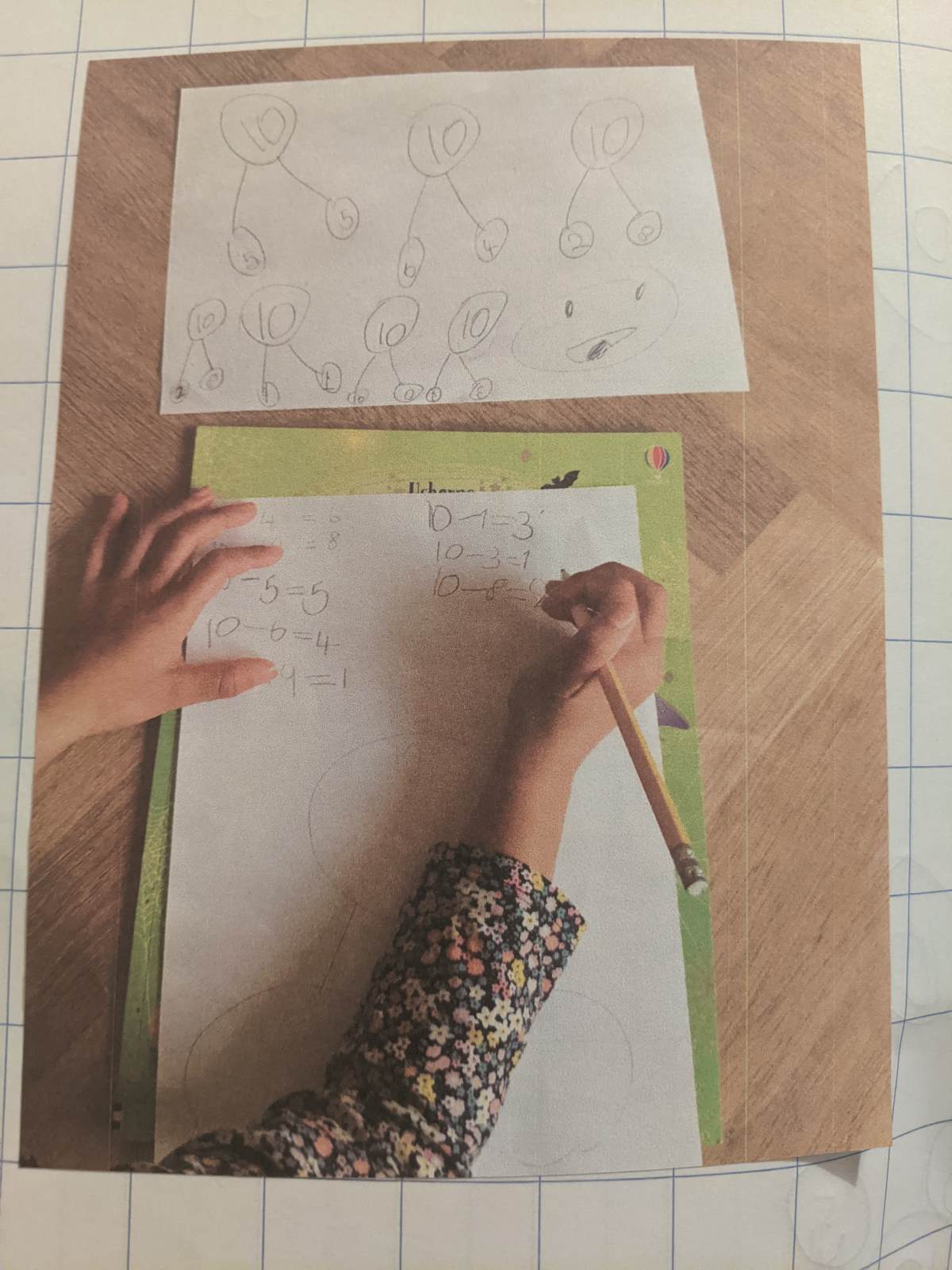
The children are enjoying using their knowledge of number bonds to 10 and 20 to write and record calculations including symbols.





